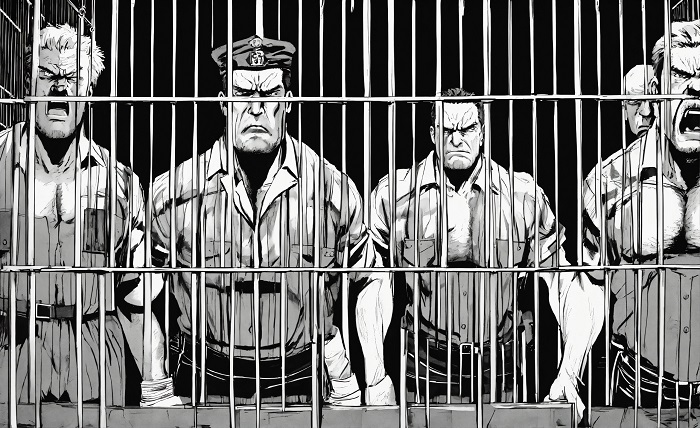So, you’re scrolling through your favourite manga collection, perhaps checking a live bitcoin price feed on another tab, when you realise something’s shifted. The lines between physical and digital ownership aren’t as clear as they once were. While most NFT markets crashed in early 2025, anime-themed digital collectibles kept punching above their weight.
That disconnect tells us something important about how culture drives technology adoption. When 11.64 million global users generated $30 billion in trading volume during Q1 2025, anime projects like Milady Maker bucked the trend with a 58% increase in sales volume. The broader NFT market might’ve declined 63%, but manga fans? They’re playing by different rules entirely.
When Pixels Pack a Punch
Gaming and sports collections now account for over 70% of NFT activity. That shift towards utility-driven projects reflects something deeper than market speculation. Engaged communities outperform flashy marketing every time, and anime fans understand community better than most demographics.
Take the Azuki collection, which maintained a floor price of 9 ETH with averages exceeding 10 ETH. Those aren’t numbers driven by hype cycles. They represent collectors who genuinely value what they’re buying. When Goku Day 2025 drove increased Dragon Ball NFT trading activity, we saw cultural events translating directly into market movement.
One Punch Man sits perfectly within this dynamic. Saitama’s deadpan humour and Murata’s incredible artwork have already proven their staying power across multiple story arcs and character developments. The question isn’t whether fans would embrace digital collectibles, but how quickly they’d adopt them once the infrastructure improves.
This cultural connection creates something traditional investment vehicles can’t replicate: emotional investment that transcends pure financial metrics.
The Authenticity Advantage
We’ve all been there. You’re considering a rare manga volume on the internet, and you’re left contemplating whether that signature is real or whether the condition is true to the description. Collectible objects in the real world come with uncertainty, and blockchain technologies directly combat the certainty issues outside of the and transaction.
Each NFT has a permanent ownership record. You’ll never need to argue whether the first edition of that book is signed by the author, or if a piece of artwork is even legit. You will not have to establish provenance through the honesty of sellers, third parties, or verification services.
Smart contracts push the experience even further by automatically transferring royalties to the creators, every time their work changes ownership. ONE and Yusuke Murata could potentially earn royalties everytime their work is sold, creating a revenue stream for themselves, long after the volume is first created and published. This is rather amazing, especially when considering the exclusion of second-hand sales in the typical manga royalty structures.
The technology erases the problems associated with the intermediaries as well. You never need to ask whether the rare character artwork you are deliberating over is worth the asking price. The blockchain verification provides certainty the physical media can simply never match.
Consider what this means for serious collectors. Authentication becomes instantaneous rather than requiring expert evaluation or costly verification services.
Beyond the Bald Cape
Multi-chain expansion has reduced entry barriers considerably. Low transaction fees and fast processing speeds now compete favourably with traditional payment methods. That accessibility opens doors for creators who previously relied entirely on publisher distribution networks.
Direct creator-to-consumer sales bypass traditional publishing limitations while smart contract royalties create sustainable revenue models. When anime derivatives markets experience robust growth globally, creators gain new opportunities to monetise their work without sacrificing creative control.
Here is an example of how this practical experience could happen:
-limited run panels of recognized manga moments
-character based collections, from names associated with heroes to villains
-artworks that were originally created for digital
-interactivity to unlock additional media, or experiences
The mix allows for diversity and appeal for many collectors at the same time, while respecting the original creator’s artistic choice. That being said, we shouldn’t presume these transitions will occur in isolation or without complication. Although other consensus methods have limited environmental energy use, concern about block chain energy use has not entirely subsided. Ultimately, success will be through licensing partnerships with significant studio representation and true creator engagement, and not through fan based projects without legal ownership.
Collecting tomorrow
Many manga enthusiasts prefer physical copies for tactile reading experiences. Digital ownership might complement traditional collecting rather than replacing it entirely. Market volatility continues despite anime project resilience, reminding us that cultural connection doesn’t eliminate financial risk.
The NFT space requires realistic expectations. Projects succeed by creating genuine value beyond speculation, focusing on community building and authentic fan engagement rather than promising unrealistic returns.
Successful digital collectibles typically offer utility that enhances existing interests rather than creating entirely new markets.
Technology works best when it serves existing passions rather than demanding we abandon them entirely. One Punch Man NFTs might enhance manga collecting by solving real problems collectors face daily. Whether that potential translates into mainstream adoption depends on creating authentic value that respects what fans already love about the medium.
